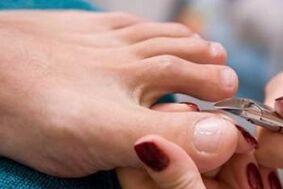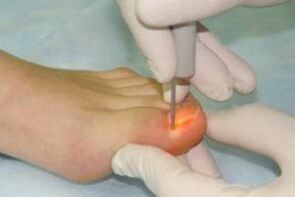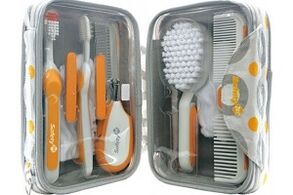There is a fairly widespread opinion among people that fungal nail infections are not dangerous to human health.Onychomycosis (fungal nail infection) accompanies many people for a significant part of their lives, often remaining unnoticed due to the absence of acute symptoms.But that doesn't make treatment any less important for such patients.Also, everyone should imagine what nail plates affected by fungi look like in order to independently diagnose the pathology.
Infection with fungal microorganisms

Fungal infections can occur in situations that are completely familiar to people.In most cases, everyone does not notice how they expose themselves to the risk of infection.Causes of toenail infection primarily include the following:
- Wearing other people's shoes, especially on feet without socks or stockings.
- Visiting saunas, baths and swimming pools without individual slippers (slates).
- Looking for pedicurist services in salons with questionable quality of work.
- Using other people's files and scissors to process nail plates.
- Using other people's cloths and towels.
In addition to the direct causes of onychomycosis, there are factors that contribute to easier infection:
- He constantly wears stale socks, stockings, tights.
- Wearing closed shoes in the hot season, which predisposes the feet to sweating (which is favorable for the reproduction of fungal microorganisms).
- Neglecting to constantly wash your feet with soap, especially in summer after wearing open shoes.
- Buying shoes made of artificial materials.
- Nails around the nails, cracks and corns on the soles of the feet.
What do toenail fungus look like?
Changes in the nails develop slowly, progress continuously without antifungal therapy and can lead to complete detachment of the nail plate, which is known to be irreversible.In different stages of the progression of onychomycosis, all its clinical manifestations have different degrees of severity.Changes in the nails are also individual, but in general, a number of common signs can be identified:
- Changing the color of the nails to brown, yellow, white, greenish and their shades, mutual combinations.
- Appearance of brittle nails, their separation.
- The edge of the nail plate crumbles more.
- The appearance of nails, cracks and peeling on the skin near the nail, in the spaces between the fingers.
- An increase or decrease in the thickness of the nail (however, in some cases the thickness remains unchanged).
Treatment of nail fungus

It is recommended to start all therapeutic measures aimed at eliminating onychomycosis on the leg when the first suspicious signs of the disease are detected.
What to treat, what medicines and how they will be used, determines the degree of development of the disease and the degree of damage to the nails.
In general, there are two options for taking antifungal drugs - local (local) and general (systemic).Topical products are gels, ointments, creams, solutions and sprays for application to the skin and nails.Systemic therapy is intravenous infusion of drugs and oral intake (orally, i.e. "by mouth") in the form of tablets or capsules.
These options can be used not only in isolation, but also in combination with each other.In addition, there is mechanical removal of infected tissue, but only in cases of advanced fungal damage.
Topical antifungal drugs
- Solutions for outdoor use.Apply them with a brush twice a day to the affected areas.Before application, it is recommended to wash the areas with soap and dry.After applying the solution, cover the area with an aseptic bandage."
- Antifungal ointments and creams are applied in a thin layer to the affected area once or twice a day.
Mechanical removal

Most patients believe that when it comes to this type of treatment, the nail will definitely be removed completely.Fortunately, only in the advanced stage of the disease (the fungus has invaded most of the tissues) do they resort to this.In other cases, pedicure instruments can remove part of the tissue, i.e. those affected by microorganisms.
The operation to remove the nail plate under local anesthesia has been around for a long time.In it, the entire nail is removed at once and first it is separated from the bed with scissors, and then it is "pulled out" with pliers.But such an operation damages the nail matrix, i.e. the basis of its regeneration, which leads to irregular growth of new tissues and their frequent ingrowth into soft tissues.
It is now possible to cure the fungus by laser removal of the infected nail plate.The laser does not touch healthy tissue and destroys only the fungal cells found even in the deep layers of the nail, avoiding deformation of the plate.
In addition, there is a hardware removal method, in which the nail is removed layer by layer using a device with cutters of different sizes.The procedure is performed once a week or every two weeks.Repeat this until the affected layers of the nail are completely removed.
Prevention of onychomycosis

Preventing infection with fungi pathogenic to humans is not so difficult for every patient.You just have to be more careful about your lifestyle and remember such a disease as onychomycosis.Here is a list of basic measures to prevent foot fungus:
- Don't wear, let alone wear, someone else's shoes.
- Use only your own socks and tights, don't forget to wash them regularly.
- Have your own personal pedicure kit.
- Use pedicure services only at verified and "quality" service points.
- Don't forget to bring and wear flip flops or slippers in the public baths.
Everyone should remember that onychomycosis is far from a harmless disease, which can even deprive the nail plate or be complicated by a serious condition called "fungal sepsis" (blood poisoning).
Today, all effective toenail fungus treatment regimens have been developed;you just need to consult a dermatologist in time and determine the presence of pathogenic microorganisms.















